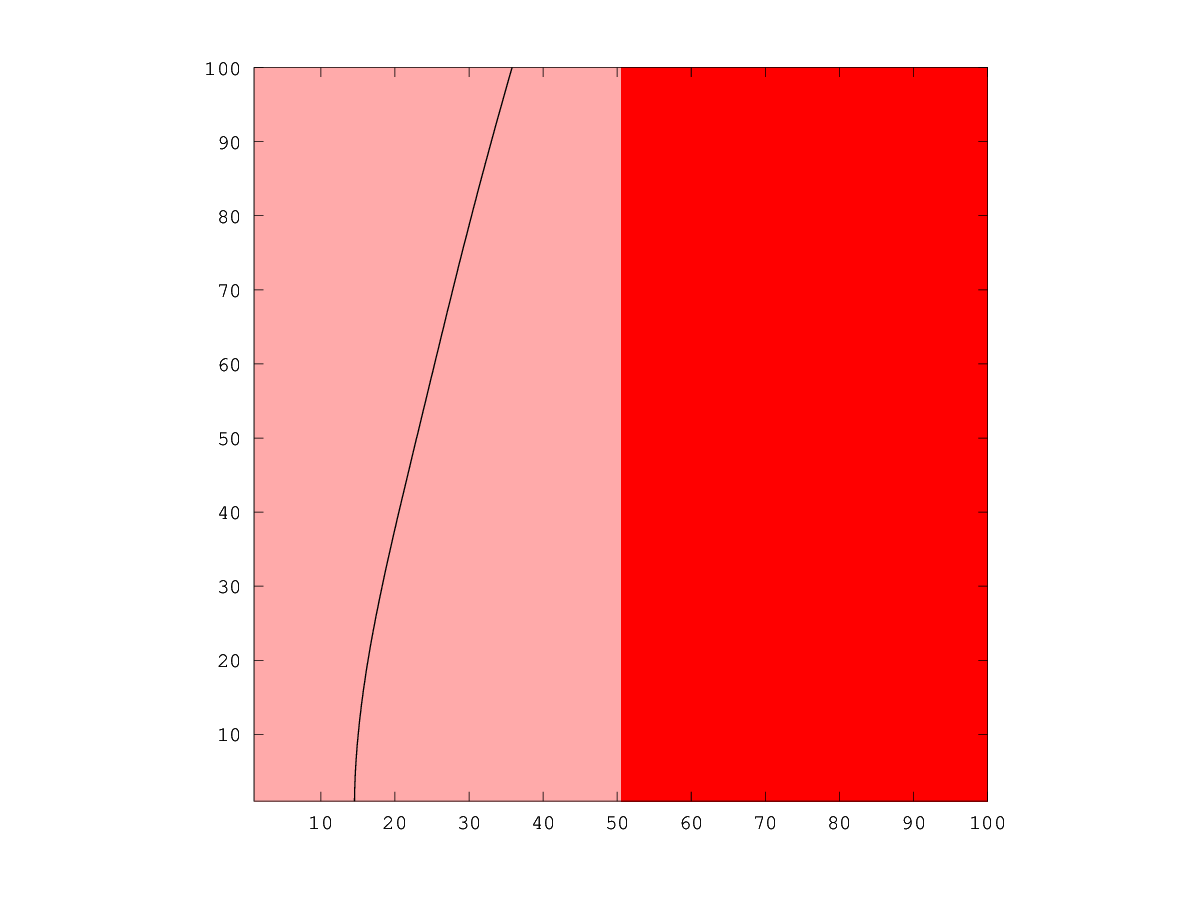
|
Octave-Forge - Extra packages for GNU Octave |
| Home · Packages · Developers · Documentation · FAQ · Bugs · Mailing Lists · Links · Code |
Calculate a level-set function of an evolving geometry from the
result of ls_solve_stationary. In particular, it is assumed
that d = ls_solve_stationary (phi0, f, h).
phi is set to a level-set function for the evolved geometry at
time t. The zero level-set of phi will describe the same
geometry as the solution of the level-set equation
d/dt phi + f |grad phi |= 0,
although phi will not be the full solution to this equation.
See also: ls_solve_stationary, ls_time_step, ls_animate_evolution.
The following code
n = 100; x = linspace (-10, 10, n); h = x(2) - x(1); [XX, YY] = meshgrid (x, x); phi = ls_genbasic (XX, YY, "half", [5, -10], [1, -1]); f = sign (XX) + 2; times = linspace (1, 9, 80); ls_animate_evolution (phi, f, h, times, 0.05);
Produces the following figure
| Figure 1 |
|---|
 |
The following code
n = 101; x = linspace (-10, 10, n); h = x(2) - x(1); [XX, YY] = meshgrid (x, x); phi = ls_genbasic (XX, YY, "half", [-9, 0], [-1, 0]); f = ones (size (phi)); f(XX == 0 & abs (YY) > 2) = 0; times = linspace (1, 19, 80); ls_animate_evolution (phi, f, h, times, 0.05);
Produces the following figure
| Figure 1 |
|---|
 |
The following code
n = 1000; x = linspace (-5, 5, n); h = x(2) - x(1); [XX, YY] = meshgrid (x, x); F = sin (XX .* YY); phi0 = ls_genbasic (XX, YY, "sphere", [0, 0], 3); ls_animate_evolution (phi0, F, h, linspace (0, 3, 40), 0.01);
Produces the following figure
| Figure 1 |
|---|
 |
Package: level-set